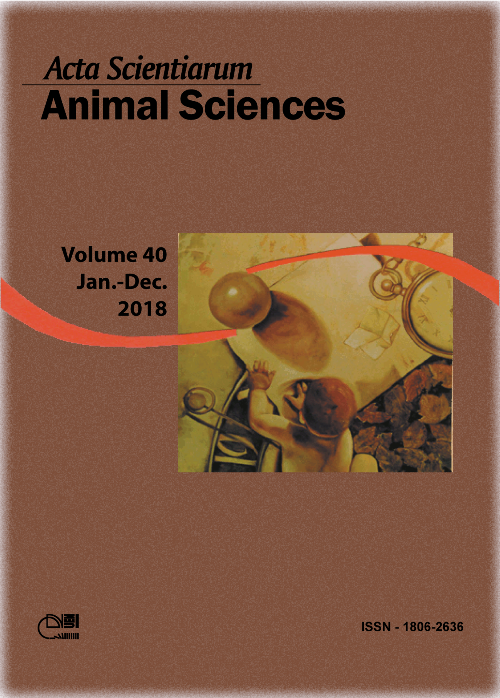<b>Genetic components of birth weight of texel sheep reared in extensive system
Abstract
This study aimed to estimate the components of (co)variance, genetic and phenotypic parameters and trends for birth weight. We used 783 birth weight records, between 2012 to 2016, of Texel sheep reared in extensive system. The components of (co)variance and the genetic parameters were estimated using six different animal models, using the restricted maximum likelihood method (REML). The model that best fit the data was Model 3, with estimates of direct additive genetic variance of 0.004, maternal permanent environment variance of 0.164, heritability coefficient of 0.011 and phenotypic variation attributed to the maternal permanent environment of 0.394. For the genetic trend, we observed a genetic gain of 0.413% and for the phenotypic trend, a phenotypic gain of 0.159 kg, between 2012 and 2016 were found. Estimates of direct heritability and proportion of the phenotypic variance explained by the maternal permanent environment presented lower and higher values, respectively, in comparison to other studies. For trends, both genetic and phenotypic, there were gains in birth weight between 2012 and 2016.
Downloads
DECLARATION OF ORIGINALITY AND COPYRIGHTS
- I Declare that current article is original and has not been submitted for publication, in part or in whole, to any other national or international journal.
The copyrights belong exclusively to the authors. Published content is licensed under Creative Commons Attribution 4.0 (CC BY 4.0) guidelines, which allows sharing (copy and distribution of the material in any medium or format) and adaptation (remix, transform, and build upon the material) for any purpose, even commercially, under the terms of attribution.
Read this link for further information on how to use CC BY 4.0 properly.








































